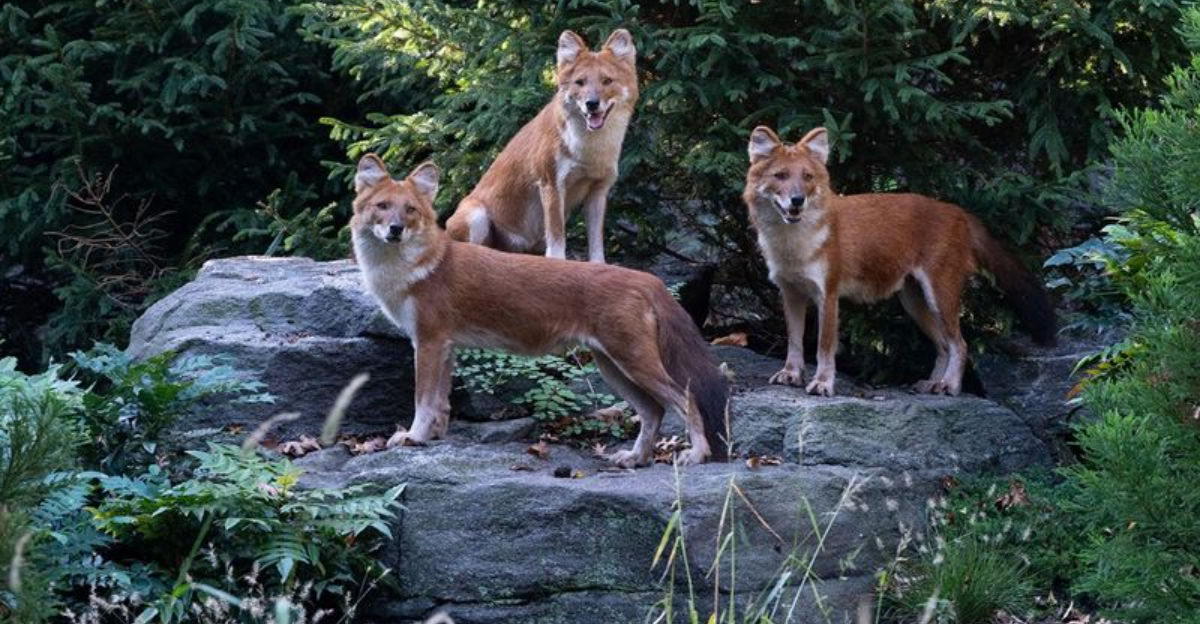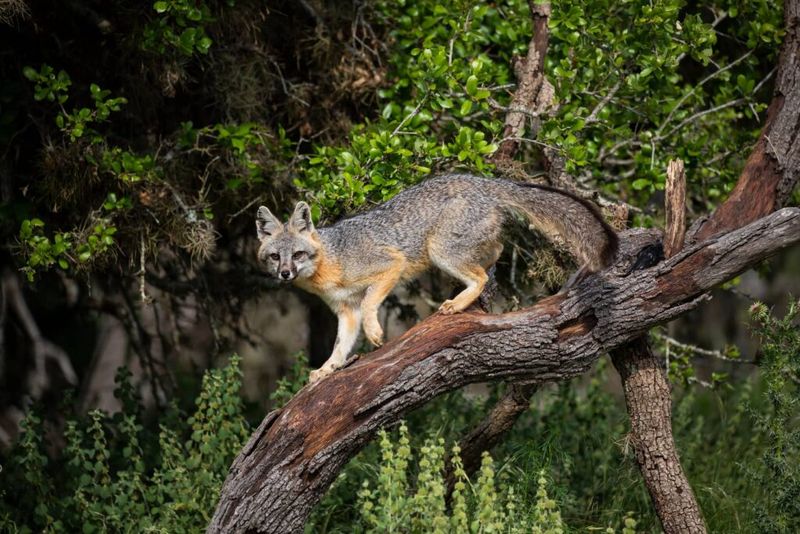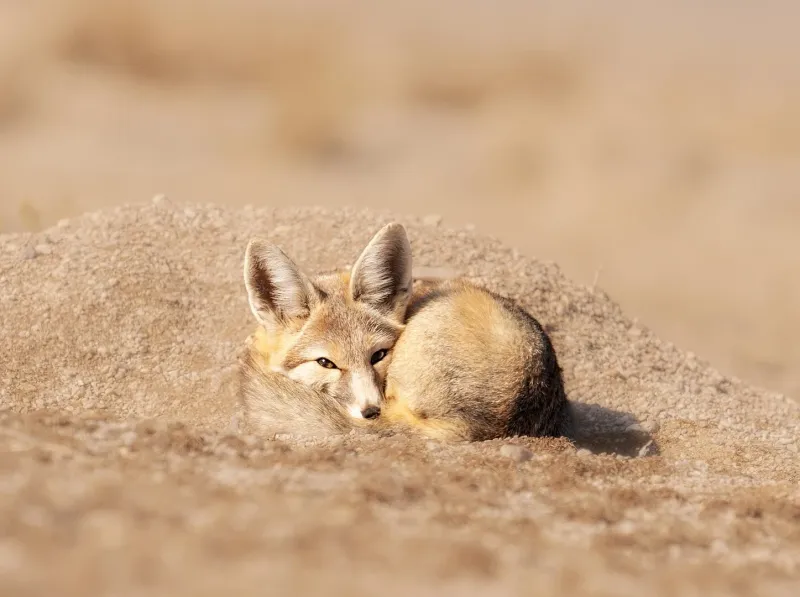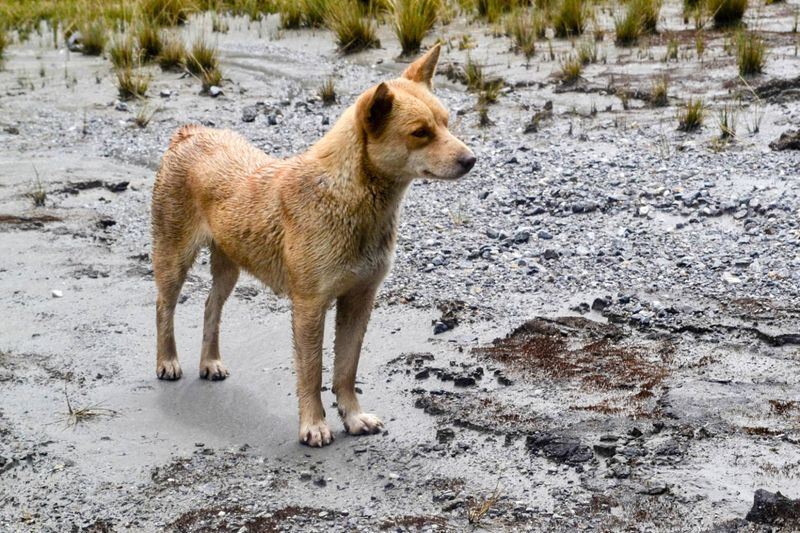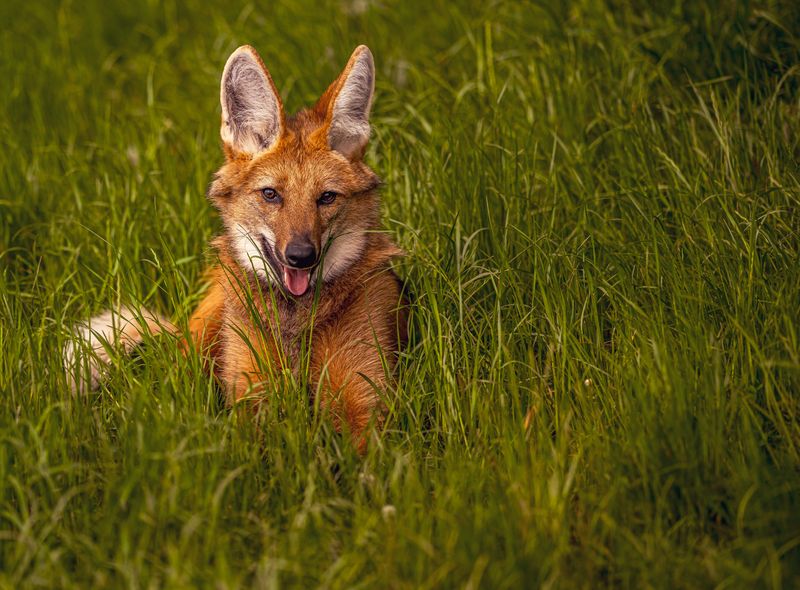North America is home to a diverse range of wild canine species, many of which are not as well known as the iconic wolf. These fascinating creatures exhibit unique behaviors, adaptations, and characteristics that make them an integral part of their ecosystems. In this blog post, we will explore ten such canines that roam the wilds of North America, offering a glimpse into their intriguing lives and habitats. Each one has its own unique charm and plays a vital role in maintaining the ecological balance. Let’s delve into the world of these captivating animals.
Coyote
The coyote, known for its keen intelligence and adaptability, is a master of survival in diverse environments. Found across North America, these canines can thrive in deserts, forests, and even urban areas. Coyotes are smaller than wolves but exhibit a similar pack behavior, often hunting in pairs or small groups. Their vocalizations, ranging from howls to yips, can be heard echoing through the night. Despite their reputation as tricksters, coyotes play a crucial role in controlling rodent populations, showcasing their importance in the ecosystem. Notably, they have even been known to learn and adapt to human presence.
Red Fox
With its striking red coat and bushy tail, the red fox is a symbol of cunning and agility. These canines are incredibly versatile, inhabiting regions from the tundra to urban areas. Known for their sly nature, red foxes are skilled hunters, often seen pouncing gracefully on unsuspecting prey. Their diet is varied, ranging from small mammals to fruits. Red foxes are solitary creatures, and their playful antics and curious behavior make them endearing to many. They have been a part of folklore across cultures, symbolizing cleverness and adaptability.
Gray Fox
The gray fox is a unique species, known for its ability to climb trees—a rare trait among canines. Its salt-and-pepper coat provides excellent camouflage in its woodland habitats. Found throughout North America, gray foxes are nocturnal and are often more elusive than their red cousins. They feed on a varied diet, including berries, insects, and small mammals. The gray fox’s climbing skills allow it to escape predators and find food in trees, showcasing its adaptability. Their shy nature makes sightings rare, adding to their mysterious allure.
Swift Fox
The swift fox, named for its remarkable speed, is a small but agile inhabitant of the North American prairies. Its sandy-colored fur provides perfect camouflage in the open grasslands. Swift foxes are nocturnal hunters, preying on insects, birds, and small mammals. Their keen sense of hearing aids in detecting prey and avoiding danger. Once near extinction, conservation efforts have helped their numbers rebound. These foxes are known for their playful nature and tight family bonds, often seen frolicking together in the wild. Their recovery story is a testament to successful wildlife conservation.
Kit Fox
The kit fox, with its large ears and petite frame, is well adapted to the arid environments of the southwestern United States and Mexico. These nocturnal creatures are efficient hunters, relying on their acute hearing to locate prey. Kit foxes are known for their playful behavior, often engaging in games with their young. Their dens, usually burrowed in sandy soil, provide shelter from the harsh desert climate. Although they face threats from habitat loss, kit foxes continue to thrive in remote regions, showcasing their resilience.
Island Fox
Native to the Channel Islands of California, the island fox is a diminutive species with a fascinating evolutionary history. These small canines have adapted to life on islands, developing unique behaviors and characteristics. Island foxes are omnivorous, feeding on a diet of fruits, insects, and small animals. Conservation efforts have been crucial in recovering their populations from near extinction due to diseases and predators. Their curious nature and approachable demeanor make them a favorite among island visitors, symbolizing hope and resilience.
Eastern Timber Wolf
Though often confused with its larger cousins, the eastern timber wolf is a distinct species with its own unique traits. Found in the northern forests of North America, these wolves play a vital role in maintaining ecological balance. Their thick coats help them endure harsh winters, while their keen hunting skills keep prey populations in check. Eastern timber wolves are highly social animals, living in packs with complex hierarchies. Their haunting howls resonate through the forests, a reminder of the wild’s untamed spirit. Efforts continue to protect these majestic creatures and their habitats.
New Guinea Singing Dog
Although not native to North America, the New Guinea Singing Dog has captured the fascination of canine enthusiasts worldwide. Known for its unique vocalizations, this rare species produces melodic howls that are unlike any other canine. With a compact build and striking features, these dogs are a testament to nature’s diversity. Found in remote areas of New Guinea, they are elusive and rarely seen. Their intriguing vocal abilities have made them a subject of scientific study, offering insights into the evolution of canine communication. Preservation of their habitat remains a focus for conservationists.
Maned Wolf
Despite its name, the maned wolf is not a true wolf, but rather a distinct species native to the grasslands of South America. Occasionally spotted in North American zoos, this species is known for its long legs and fox-like appearance. The maned wolf’s diet is varied, including fruits, small mammals, and birds. Its solitary nature and distinctive appearance make it a subject of intrigue among wildlife enthusiasts. The maned wolf plays a crucial role in its ecosystem, helping to maintain the balance of plant and animal populations.
Dhole
The dhole, or Asiatic wild dog, is a lesser-known canine species occasionally found in certain North American reserves. Known for their pack behavior, dholes are highly social animals with complex vocalizations. Their reddish coats and bushy tails are distinctive features, adding to their allure. Dholes are cooperative hunters, often taking down prey much larger than themselves. Their presence in the ecosystem is vital, as they help control prey populations. Conservation efforts are essential to protect these remarkable animals from habitat loss and decline, ensuring their continued existence in the wild.
